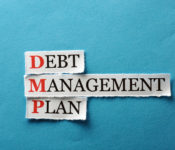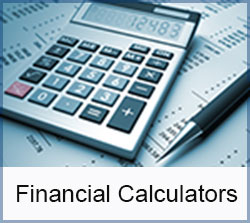Debt Is a Four-Letter Word

Debt today is so common, you might say it can’t be avoided. Most people are not in a position to purchase a house or car for cash, while those who can buy such things outright may prefer to finance and keep control of their capital.
The truth is, while most of us see debt as a bad thing, any money borrowed to generate income or increase net worth can be considered “good debt.”
If the amount borrowed is invested for an overall gain, the debt is a tool. Borrowing to further your education, for example, is good debt since an education generally increases the likelihood you will earn more in the future. Most often, too, the interest paid on this type of debt is tax deductible.
Examples of Good Debt:
- Student loans for university, college or trade school education can be good debt. As mentioned, interest rates are usually quite low, and repayment is commonly deferred until after graduation. In general, educated workers earn considerably more than uneducated ones, making the cost of borrowing easier to repay. A student loan is the first experience many Canadians have in borrowing and in managing (i.e., paying back) a large fiscal obligation.
- Business ownership. Many entrepreneurs start their businesses with borrowed funds. For a person with a strong business plan, good entrepreneurial instincts and a desire to succeed, assuming such a loan can be the best investment an individual can make.
- Real estate. Whether a primary residence or revenue property, real estate has proven to be a prudent long-term investment.
- Borrowing to invest allows you to put more money into your investment in an effort to earn extra returns.
This is not to say good debt is without risk. If you take out a leverage loan and your investment fails, you will find yourself owing the borrowed amount plus interest, regardless. Real estate markets can fall, businesses often fail, and there are no guarantees that an education will result in higher income or stable employment.
With that in mind, it is important to think about insuring your loans to protect your family and estate from unwanted liabilities if you die, become critically ill, or disabled.
Bad Debt
Unlike good debt – borrowing to acquire assets that are likely to increase in value – bad debt is incurred when we purchase assets that will decrease in value. Some examples:
- As soon as you drive that shiny new car off the lot, it loses value and continues to do so for as long as you own it. Unless you use your vehicle for business purposes, paying interest on a car loan makes little sense.
- Credit cards. If you use credit cards to buy clothing, consumables and other goods or services, you are building a balance of bad debt. Credit card interest rates are extremely high, and rewards cards often charge additional annual fees, making any balance you carry a prohibitively expensive liability.
- Travel now and pay later is simply a bad idea. Once the joy of the vacation wears off, the borrower is left with a high-cost travel loan.
In between good debt and bad debt lies the consolidation loan. Although it is used to merge all “bad” debts, it makes the burden easier to bear by lowering interest costs and monthly payments.
Get Rid of Debt!
Two plans often recommended for getting out of bad and consolidated debt are the debt snowball method and the debt stacking method.
Debt Snowball Method
- List all of your debts in ascending order from the smallest (by amount owed) to the largest.
- Pay the minimum payment on every debt every month.
- Determine how much extra you can pay each month; begin paying off your smallest debt with this amount plus your minimum payment.
- Continue to pay this amount until your smallest debt is repaid.
- Once the smallest debt is paid, add your minimum payment from debt #1 (now retired) plus the extra you were paying on it to the minimum payment due on debt #2, your second smallest amount owing. Each time one debt is paid off, your payment amount “snowballs,” grows larger, as it is added to the next.
- Continue doing this until each debt is retired.
Debt Stacking Method
- List all of your debts according to their interest rates.
- Continue to make all minimum payments on each balance.
- Work out how much additional money, over the minimum payment, you can afford to pay each month, and add this to your minimum payment being made on the loan with the highest interest costs.
- Once the highest-interest balance is repaid, start paying the debt with the next highest interest rate.
- Continue until all bad debt is retired.
Whichever strategy you use, make sure non-deductible-interest debt is paid off before you tackle the “good” debt.
Anyone concerned about debt load is well advised to seek the advice of a qualified financial planner who will help develop an action plan and recommend risk-management steps. As a qualified planner, I would be most happy to assist you in your debt-management efforts. Please feel free to call me at any time.


Comments are closed.